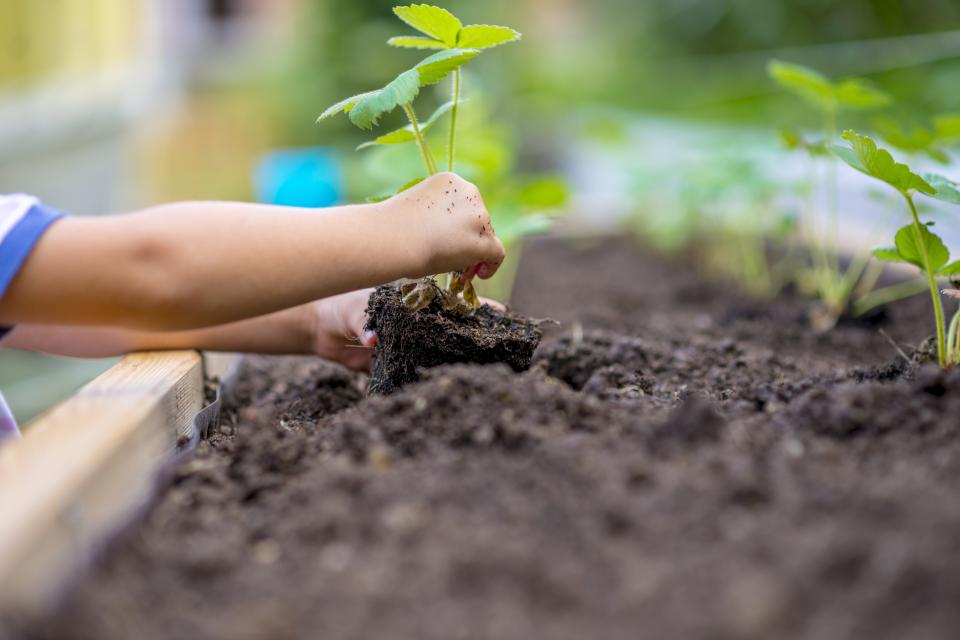Community Right to Grow
The Council is excited to share that community groups are now able to apply for the Community Right to Grow scheme
The Community Right to Grow scheme encourages community groups to become custodians of parcels of currently unused land across the District for the purpose of community cultivation.
In this opening pilot phase, the Council identified a range of suitable parcels of land and put in place a straightforward application process, along with guidance and information to support interested groups through the process.
The scheme could be expanded depending on the level of interest.
Since declaring a Climate Emergency in 2019 and our commitment to supporting nature and biodiversity across the District, we are continually working on reducing our reliance on fossil fuels. Through growing their own food, residents can become less reliant on high carbon food imports while also creating new safe spaces for communities (and some wildlife), alongside this initiative being transformative to spaces across the District.
St Albans City & District Council are pleased to share we have identified plots of suitable land across the District, for resident groups to apply to use the land for community cultivation.
Below, you will find an outline of the commitments from the Council motion, information on the project, how to apply and FAQs.
Community Right to Grow: Council Motion Commitments Toggle accordion
Investigate opportunities around identifying areas of council owned land suitable for community cultivation.
Consider community food growing/flower beds on sites awaiting development for other uses on a fixed term basis.
Ask the Leader to ask the district’s MPs to support Incredible Edible’s Right-to-grow campaign and bill in parliament.
Liaise with national Incredible Edible team to learn from other councils within the scheme.
Current Plot Locations
Below you will see PDF links to the current pre-vetted plot locations for you and your community groups to apply for. Further plots will be available in the near future.
To view the plots within the District of St Albans through the District mapping service, follow this link and scroll down to 'District Mapping Service'.
To find more on your local Parish you can do so by following this link.
How To Apply
Having looked at the available plots, the following points are a few key considerations when thinking about submitting an application for a Community Right to Grow site:
- This initiative is for community groups to cultivate land. A community group needs to be formed as a legal entity in order that they can enter the required agreement for using the Council’s land. Applications from individuals will not be considered.
- The Council have suggested potentially appropriate locations. Your application will need to provide detail on the precise area of land you wish to use and the manner in which you propose to use it, including considering access to, from and through the site.
It will not be possible to give permission for any of the following:
- Fencing off any part of the site to exclude members of the public from the area. Public access must be permitted at all times.
- Sheds, outbuildings or other structures which are intended for storage on site. (any further reading of importance, licences, legal parameters, stipulations on time frames etc.)
Application Form
To apply, please download and fill in the Expression of Interest form, linked below, and send to estates@stalbans.gov.uk.
FAQs
If you have any further questions please contact estates@stalbans.gov.uk and we will do all we can to help.
Will our organisation be asked to enter into any agreement for our use of the land? Toggle accordion
Yes.
Your organisation will be required to enter into a licence agreement with the Council, which is a legal arrangement documenting the proposed use and extent of the land permitted to be used. This document will give formal permission for your organisation’s use of the land.
The agreement must be entered into by a legal entity or organisation, the Council will not enter into agreements for the Community Right to Grow with individuals.
Will my community group need to have insurance to be able to apply? Toggle accordion
Yes.
SADC require all community groups that apply for this project to have Public Liability insurance cover at £10 million (as on the application form).
Will there be any restrictions on what I can put on the land? Toggle accordion
Yes.
In order to easily facilitate this project all sites will be cultivated using raised beds only. Digging into the ground will only be allowed if the applying organisation is prepared to arrange the necessary surveys to determine if there are any sub-terranean services which could be damaged by digging down.
The Council may be able to help fund such surveys on a case-by-case basis.
The Council will also need full details on what your organisation is planning to grow on site for discussion with our Parks & Green Spaces Team.
There will also be restrictions on pesticides and the like that can be used on the site.
Additionally permission will not be given to fence of the land for the purpose excluding the public nor will permission be given for any structure to store materials etc on site.
Do I need experience in growing to apply? Toggle accordion
You don't need to have any experience in growing to apply. The project aims to involve as many residents as possible, no matter their experience level.
What can be grown on the plots? Toggle accordion
Both food and herbs, and also flowerbeds.
Due to the nature of some of the plots, there will be differing regulations on what can be grown and how. This could mean that digging down in the soil is prohibited, so raised flower beds must be used.
Is there disability access to the plots? Toggle accordion
We aim for there to be no resident who can't take part in the project. We are committed to finding accessible plots of land, where possible, so all local residents can get the most out of the Community Right to Grow scheme.
When applying to use sites for the Community Right to Grow scheme your submission should detail how you intend to maintain or create inclusive access to the land in question.
How much does wasted food cost UK households per year? Toggle accordion
Per year, on average wasted food costs UK households £500.
About a third of the planets food goes to waste and happens in every link of the food supply chain, from the fruit that never makes it off the farm to the vegetables that we forget are in our fridge.



